The world of 3D modeling design is as fascinating as it is visually appealing. Computer graphics technology allows designers to create almost anything in digital form. Many products start as simple sketches drawn with pencil, but then the ideas are developed into three-dimensional images that are hyper-realistic representations of the actual objects to be produced. The models can be either static or dynamic depending on the complexity of the product. Static models, as the name suggests, feature no movable parts. Dynamic models are often created with lifelike qualities to represent sophisticated objects or even living organisms. A modeling technique called 3D rigging is necessary to animate visual imagery on the computer.
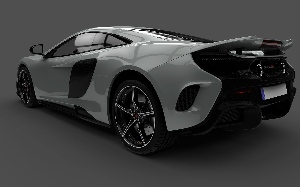 Introduced in the late 1980s, 3D rigging is a computer animation technique where articulated objects or characters are drawn in two different parts including “surface” or mesh which represents the skin or outer layer of the model and “interconnected bones” to serve as the frame. Unlike the static hard structure of a building, the frame is designed to act like mechanical parts. A motion made by one piece affects another in a logical chain reaction. Not only does the movement alter the shape of the frame, but also the surface layer to some extent. For example, an animated 3D model of a piston and crankshaft should also provide visual imagery of the heat generated by the friction of the moving parts. A common model would show a glowing orange-to-red color on the metal surface. It’s possible to omit how friction generates heat, but the model wouldn’t be realistic.
Introduced in the late 1980s, 3D rigging is a computer animation technique where articulated objects or characters are drawn in two different parts including “surface” or mesh which represents the skin or outer layer of the model and “interconnected bones” to serve as the frame. Unlike the static hard structure of a building, the frame is designed to act like mechanical parts. A motion made by one piece affects another in a logical chain reaction. Not only does the movement alter the shape of the frame, but also the surface layer to some extent. For example, an animated 3D model of a piston and crankshaft should also provide visual imagery of the heat generated by the friction of the moving parts. A common model would show a glowing orange-to-red color on the metal surface. It’s possible to omit how friction generates heat, but the model wouldn’t be realistic.
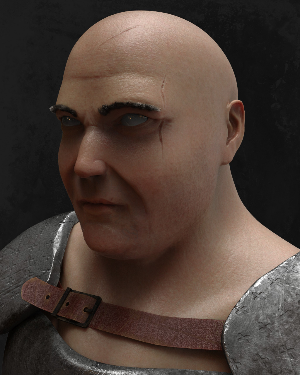 Almost all 3D models begin as static images. Designers then use 3D rigging techniques and motion systems to determine how the animation will look and how it affects the model itself. There can be a lot of design elements involved, like flexibility, structural integrity, textures, colors, and overall geometry. Thanks to modern software, the complex algorithms that govern motions and their effects on an object are simplified into relatively easy to understand user interfaces. 3D rigging allows designers to depict how the actual object will look when it moves and what effects the movement generates on the object itself (and sometimes the surrounding environment).
Almost all 3D models begin as static images. Designers then use 3D rigging techniques and motion systems to determine how the animation will look and how it affects the model itself. There can be a lot of design elements involved, like flexibility, structural integrity, textures, colors, and overall geometry. Thanks to modern software, the complex algorithms that govern motions and their effects on an object are simplified into relatively easy to understand user interfaces. 3D rigging allows designers to depict how the actual object will look when it moves and what effects the movement generates on the object itself (and sometimes the surrounding environment).
Deformation of Mesh
The frames (interconnected bones or skeleton) of the object can be animated using digital gears, hinges, ratchets, wheels, and all sorts of mechanical joints. For models that depict a living organism, the frame is most likely designed to illustrate the natural range of motion of bones and ligaments. The frame, however, is only one part of 3D rigging process, and designers still have to deal with the surface layer or mesh. All movements can be isolated, so they don’t introduce changes to the appearance of the object. Such an approach is more straightforward to produce, but it renders the animation unrealistic for the most part. Take the movement of a human arm, for example, a twist of the arm or bending of an elbow adds muscle bulge to the appearance of the arm compared to a static straight arm. Deformation of the mesh in relation to the movement of the frame is, therefore, necessary to produce lifelike animation. The same principle applies to all realistic animated 3D models.
Besides requiring technical abilities to use 3D modeling software, creating a realistically animated object also takes a basic understanding of anatomy. Even seemingly simple animations of non-living things demand a working knowledge of physical science. The movement of water from various wind speeds and slope are among the most complex cases of 3D animations, where designers need to be aware of multiple natural sciences at the same time. Deformation of the mesh is based on the position of the frame. In other words, the shape or construction of the frame determines what the mesh should look like.
While 3D rigging doesn’t always try to imitate real physical or anatomical processes, fluid movements of both the frame and the mesh help create a convincing model. The movements should appear as they naturally would when seen by human eyes and perceived by the brain. The mesh deformation process improves the seamlessness of the animation. You can do a 3D rigging without it, but the result will not be as representative of the real object as it can be.
Types of 3D Rigging
Animated 3D models are used for various applications from product presentation to prototyping, from games to movies, from engine design to architecture. However, not all animated models are built the same way. Professional modelers need to master several different techniques and determine which one is the most effective for each animation. The most popular types of 3D rigging are:
 • Inverse Kinematics (IK): Most commonly used to create animated models of living organisms, IK focuses on recreating natural body movement based on the being’s skeletal system. As long as the modeler uses the right skeletal system, creating an animation is mostly automated. This is a quick and smart solution to handle an otherwise complex range of motion. For instance, an animated 3D model of a lion can appear to walk or run as naturally as it does in real life by simulating the movement of its legs.
• Inverse Kinematics (IK): Most commonly used to create animated models of living organisms, IK focuses on recreating natural body movement based on the being’s skeletal system. As long as the modeler uses the right skeletal system, creating an animation is mostly automated. This is a quick and smart solution to handle an otherwise complex range of motion. For instance, an animated 3D model of a lion can appear to walk or run as naturally as it does in real life by simulating the movement of its legs.
To do this, the modeler only needs to deal with a small part of the skeletal system as opposed to configuring every single bone in the lion’s body. By moving a bone in one of its legs to the desired position, the rest of the legs will follow and get into the right position automatically. Software commonly used to handle IK animation are Autodesk Maya and Houdini.
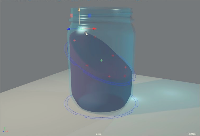 • Fluid Simulation: Animations for non-living things such as water, smoke, fire, explosions, and liquids are made using the Fluid Simulation technique. Such objects have no skeletal system or rigid structure which means the animation should be as smooth and natural as it can be to appear realistic. Any irregularities in the motion are more noticeable. Fluid Animation is used widely in video games and movies. Blender and RealFlow are common software suites used for this animation technique.
• Fluid Simulation: Animations for non-living things such as water, smoke, fire, explosions, and liquids are made using the Fluid Simulation technique. Such objects have no skeletal system or rigid structure which means the animation should be as smooth and natural as it can be to appear realistic. Any irregularities in the motion are more noticeable. Fluid Animation is used widely in video games and movies. Blender and RealFlow are common software suites used for this animation technique.
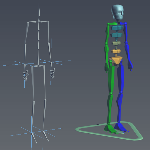 • Skeletal Animation: 3D Skeletal Animation is a combination of both IK and Fluid Simulation techniques. It’s arguably the most complex technique as it involves not only natural animated motion but also the deformation of the mesh.
• Skeletal Animation: 3D Skeletal Animation is a combination of both IK and Fluid Simulation techniques. It’s arguably the most complex technique as it involves not only natural animated motion but also the deformation of the mesh.
This technique is the standard method used in creating a video game or movie characters or objects animated for a prolonged period (at least 100 frames).
Although 3D rigging can be automated using computer software, designers still need to draw everything based on science. Virtual anatomy and physical properties such as weight, bone strength, joint position, and muscle reactions must be considered for models of living organisms. For other objects, designers need to understand material density, tensile strength, flexibility, pressure, etc.
In a big project such as a movie or video game, any form of the animated model very rarely appears as a standalone object. Every single movement alters both the shape and look of the object as well as the environment where it is positioned in the scene. For example, a running lion also changes the appearance of the grasses, wind directions, shadows, and all other objects that come into contact with the animal while it’s moving.
3D Rigging Applications
Think of a 3D model handcrafted from clay. It’s static and it doesn’t move at all until you manually bend, push, or twist some part of it. For the simple purpose of creating a design concept of an object, a clay model is probably enough to satisfy clients. However, with the level of graphics technology available today, it makes little sense to settle for a static model unless you’re looking for the handmade or artistic value of the object. In commercial applications, 3D rigging models are used in nearly all industries for product prototyping. Let’s not forget about the Virtual Reality (VR) market where 3D animations are actual commodities. In fact, the demand for realistic animation is higher in this industry because users interact with the objects that exist in the virtual world. Therefore, proper 3D rigging is very important in VR. This isn’t to say that other industries have lower standards, though.
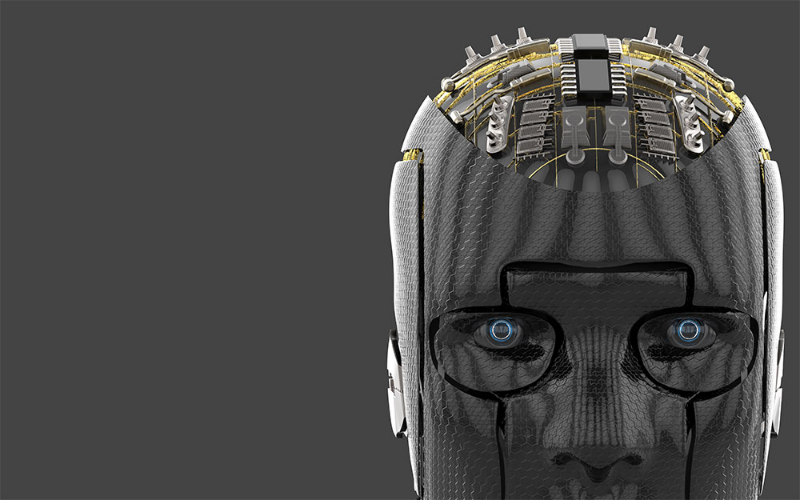
When used for product prototyping purposes, 3D rigging has become a necessity – rather than a novelty – to showcase how an object would perform through digital media. Sometimes it’s impossible to create a physical prototype because static objects simply don’t give enough detail. If you’re trying to show how a skyscraper moves to compensate winds and earthquakes, creating a 3D rigging and animation is much quicker and simpler than creating a miniature of the building. Moreover, a professional modeler can use accurate data points to depict the actual wind speed or direction and the land condition. 3D rigging of living organisms can predict a possible range of motion, effects on the skeletal system from impacts, overall strength, and even the right size of an outfit with accurate results.
Now that you know what 3D rigging is and the benefits it can bring to your company, you’ll want to hire the best of the best to do it for you. Luckily, here on Cad Crowd, we have an extensive database of design freelancers who offer top-notch quality for a reasonable price. Let us take care of the hassle of finding and vetting freelancers. All you have to do is tell us a little bit about your project and we’ll match you with one of our expert designers. Get started today and we’ll send you a free quote!
